Material Characterization Laboratory
Material Characterization Laboratory
The Materials Characterization Facility (MCF) is an interdisciplinary research facility in the Department of Chemistry. The MCF provides simulating environment for a research community across the campus, and houses advanced equipment to support research in the high-quality fundamental interdisciplinary research programs in materials science. The major themes of research carried out in the MCF are porous materials and surfaces, nano-scale interfaces and structures, gas storage and uptake, polymeric materials, materials science, catalysis, and nanotechnology. The research activities that are facilitated by the laboratory can be divided into four major areas: porous systems for gas storage and separations, materials for catalysis, polymeric systems, and nanotechnology.
It contains 200 square meter of laboratory space in two separate buildings (Buildings 4 and 75) and state-of-the-art physisorption, chemisorption and thermogravimetric analysis instrumentations, and gel-permeation chromatography. The laboratory currently houses three GPCs for analysis of polymeric materials.
Dr. Tawfik Saleh
Supervisor
Mr. Mansour Al-Zaki
Supporting Staff
KFUPM
Bldg. 4 - Room 155
Dhahran, P.O. Box 5048
+966 13 860 2274
cls@kfupm.edu.sa
Sunday - Thursday
8:00 A.M - 4:00 P.M
KFUPM Faculty, Students, and Staff can utilize the facilities via booking through KFUPM RRM.
For outside KFUPM Community, you may book your reservations by registering at this link:
https://research.kfupm.edu.sa/RRM/Login.aspx
Description
| Instrument | KFUPM First | KFUPM Additional | Non-Profit First | Non-Profit Additional | Commercial First | Commercial Additional |
| Chemisorption Analyzer | 150 | 120 | 250 | 220 | 500 | 450 |
| Physisorption Analyzer | 130 | 100 | 190 | 150 | 450 | 400 |
| GPC 220 | 170 | 140 | 250 | 210 | 700 | 550 |
| GPC Aqueous | 170 | 140 | 250 | 210 | 700 | 550 |
| GPC | 170 | 140 | 250 | 210 | 700 | 550 |
Description
Description
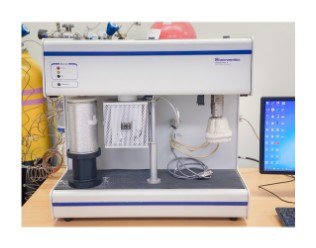
Location:
Chemistry department
Building #4, Room #155
Scientist In-Charge:
Name: Mr. Mansour Alzaki
Phone:3859
E-mail: malzaki@kfupm.edu.sa
Chemisorption Analyzer
Micrometrics Chemisorption measurement techniques are useful for evaluating physical and chemicalproperties of materials that are critical for process / reaction performance. Primarily, chemisorption isused to evaluate the number of available active sites to increase the rate of, or catalyze, chemicalreactions
Main Features:
Four internal temperature-controlled zones can be heated independently up to 150 °C. This prevents condensation in theflow path and allows studies to be performed with vapors.
Low internal plumbing volume assures high resolution, fast detector response, and reduces error.
A highly sensitive linear thermal conductivity detector (TCD) assures the calibration volume remains constant over the fullrange of peak amplitudes so the area under the peak is directly proportional to the volume of gas reacted.
Four high-precision mass flow controllers provide extremely accurate, programmable gas control.
Corrosion-resistant detector filaments are compatible with most destructive gases and reduce the likelihood of filamentoxidation.
A Clamshell furnace can heat the quartz sample reactor to 1100 °C. Any number of ramp rates and sequences facilitatecustomized experiments.
Four gas inlets each for the preparation, carrier, and loop gases permit four-gas sequential experiments, such as TPR/TPOcycles.
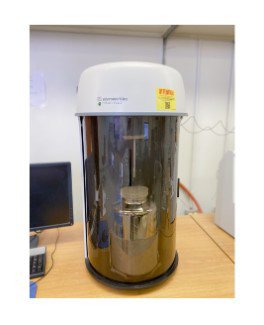
Location:
Chemistry department
Building #4, Room #155
Scientist In-Charge:
Name: Mr. Mohammed Lukhman
Phone: 4835
E-mail: mohammad.salfi@kfupm.edu.sa
Surface Area & Porosity Analyzer
The TriStar II Plus is a an automated, three-station, surface area and porosity analyzer that deliversexcellent performance and speed of analysis. With three available analysis ports, the TriStar II Plusprovides high sample through-put and advanced data analysis features to the user. The unique stainlesssteel analysis manifold is corrosive resistant and designed for highly accurate gas management forconfident and repeatable results.
Main Features:
The unique stainless steel analysis manifold is corrosive resistant and designed for highly accurate gas management
Improved Dewar design provides more than 40 hours of continuous temperature control
Intuitive MicroActive software gives the user the ability to interactively evaluate isotherm data and reduces the time required to obtain surface area and porosity results
User-defined reporting options allow direct modeling
The powerful Python scripting language allows users to develop extensions to the standard report library available within the TriStar II Plus software application
An innovative dashboard monitors and provides convenient access to real-time instrument performance indicators and maintenance scheduling information
Capable of utilizing two isotherms (CO2 and N2) for calculating pore size diameter via NLDFT for microspore analyses of carbons
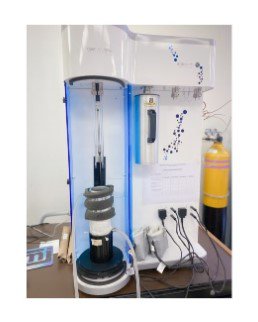
Location:
Chemistry department
Building #4, Room #155
Scientist In-Charge:
Name: Mr. Mohammed Lukhman
Phone: 4835
E-mail: mohammad.salfi@kfupm.edu.sa
Automated Gas Sorption Analyzer
A highly sophisticated gas sorption analyzer with up to three micropore analysis stations, and fourdedicated built-in sample preparation (degas) ports. Metal organic frameworks (MOFs), activated carbonsand zeolites - indeed any type of microporous solid - are analyzed with equal ease thanks to powerfulWindows-based software, the most extensive suite of density functional theory (DFT) pore sizecalculations, and a wide range of sample cell types.
Main Features:
These physisorption-only micropore models feature ahigh vacuum system and low pressure transducers forhigh-quality, detailed micropore studies. They areavailable with up to three analysis stations. Eachanalysis station is equipped with its own dedicated setof pressure transducers

Location:
Chemistry department
Building #4, Room #155
Scientist In-Charge:
Name: Mr. Hassan Amasha
Phone: 3859
E-mail: hassan.amasha@kfupm.edu.sa
Surfaces Characterization
Recognized as the most advanced instrument in the field for material surface characterization1. The 3Flexhas become a crucial tool for providing high resolution adsorption, desorption, isotherms to advance andvalidate fundamental understanding into development of methodologies and process improvements.
3Flex permits you to optimize your experimental parameters to gain greater understanding of yourmaterial. The 3Flex has the capability to analyze a sample with 3 separate probe gases simultaneously,one on each analysis port, within a single run.
Main Features:
Three configurable analysis ports adapt to the specific needs of your workflow
Research-grade instrument provides superior mesopore/micropore, physisorption, or chemisorption analyses. Ports can be configured for krypton analysis of lowsurface area materials
Vapor sorption capability
Ultra-clean manifold design features hard-seal valves and metal seals to provide high chemical resistivity, ease of evacuation, and lowest outgasing rate in theindustry
Isotherm data collection begins in the 1 o-6 torr range (10-9 relative pressure range for N2)
MicroActive™ Data Reduction software provides powerful, yet intuitive, data analysis
Advanced dosing method permits user to combine pressure and volume increments
Small footprint conserves valuable lab bench space
Analyze a sample with 3 separate adsorbent gases simultaneously, one at each port in a single analysis
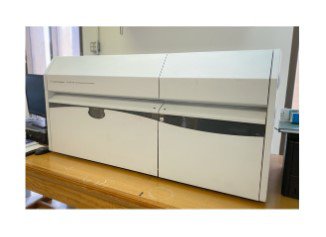
Location:
Chemistry department
Building #4, Room #155
Scientist In-Charge:
Name: Mr. Mohammed Lukhman
Phone: 4835
E-mail: mohammad.salfi@kfupm.edu.sa
Gel Permeation Chromatography System (GPC 220)
The Agilent PL-GPC 220 is an integrated GPC/SEC system that features reproducibility for any application, across the entire operating range. An extremelypowerful platform, the PL-GPC 220 runs almost all polymer, solvent and temperature combinations, with full automation and advanced detection, fromambient up to 220 °C.
Main Features:
Main Features:
- Maintains sample solubility
- Refractive index, light scattering and viscometry detectors
- High quality detectors
- Safe solvent module
- Spacious and easy-access oven
- Dual-zone heated autosampler
- Flexible multi-detector capability
- Sample preparation option

Location:
Chemistry Department
Building #4, Room #155
Scientist In-Charge:
Name: Mr. Mohammed Lukhman
Phone: 4835
E-mail: mohammad.salfi@kfupm.edu.sa
Gel Permeation Chromatography System (GPC)
With the Agilent 1260 Infinity II Multi-Detector GPC/SEC System, one can select from any combination of detection by refractive index, light scattering,and viscometry. The system delivers accurate, absolute molecular weights and sizes, and can be used to analyze a wide range of polymers/ macromolecule,regardless of molecular weight range or solvent. Each detector has independent temperature control to ensure that high levels of precision andreproducibility can easily be achieved from one day to the next.
It comprises an Agilent 1260 Infinity II Vialsampler, for higher unattended sample throughput. The Agilent Infinity II Multicolumn Thermostat providesaccurate temperature control to minimize detector noise and baseline drift. The Agilent Infinity II Isocratic Pump achieves extra flow precision, and theAgilent 1260 Infinity II Refractive Index Detector gives precise results.
Main Features:
Characterizes polymers/ macromolecules accurately and efficiently using RID, light scattering, or viscometry. The instrument
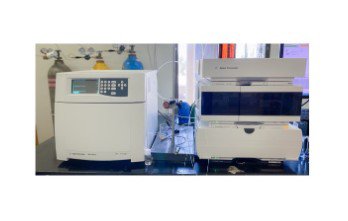
Location:
Chemistry Department
Building #4, Room #155
Scientist In-Charge:
Name: Mr. Mohammed Lukhman
Phone: 4835
E-mail: mohammad.salfi@kfupm.edu.sa
Gel Permeation Chromatography System (Aqueous)
The Agilent 1260 Infinity GPC/SEC System is a cost-effective solution for routine polymer characterization by conventional GPC/SEC separation withrefractive index. The system’s unmatched flow precision and temperature stability gives you the confidence of obtaining reproducible and reliable results
Main Features:
The 1260 Infinity GPC-SEC Analysis System, with its precise isocratic solvent delivery system, is ideally suited for easy and reliable GPC/SEC polymercharacterization.
Enables accurate, routine analysis, with Refrective Index (RI) detector. The instrument is dedicated for Water soluble samples.